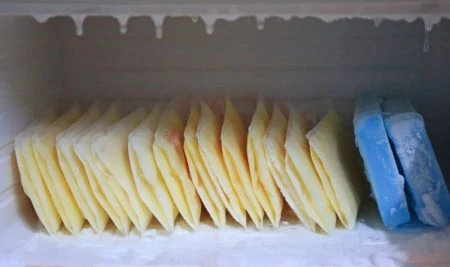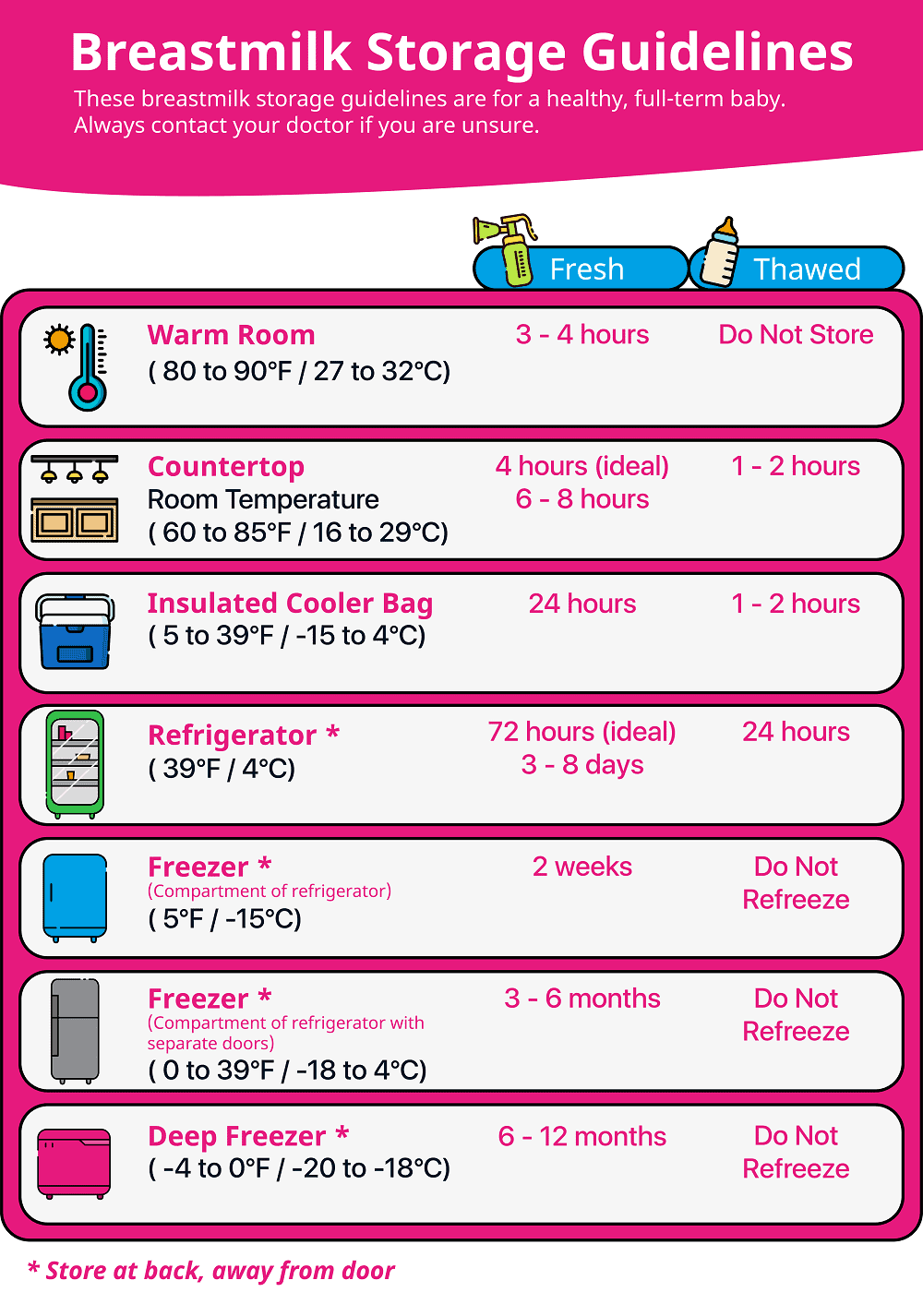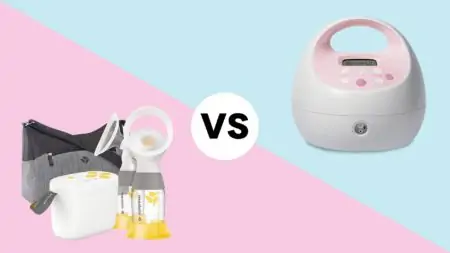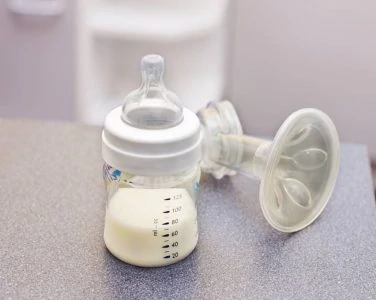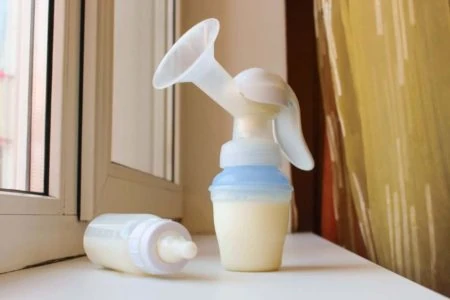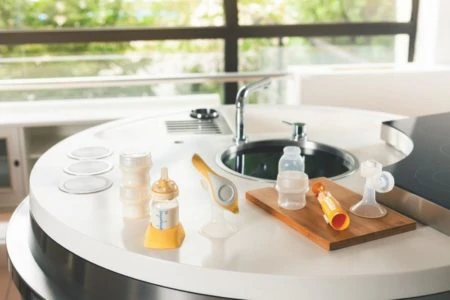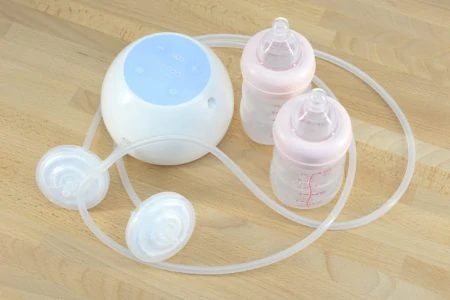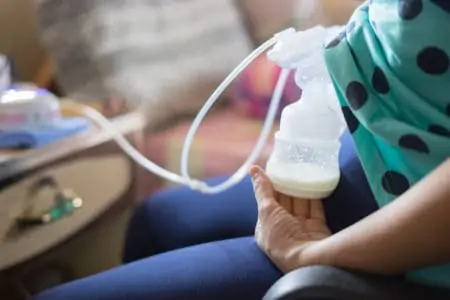Can you heat breast milk after storing it in the fridge or freezer? And is there a right way to prepare that liquid gold?
We pump and store milk for plenty of reasons, but handling it correctly is crucial to keep your baby safe from bacteria. Plus, nobody wants to accidentally spoil a stash they worked so hard to pump.
In this article, we’ll walk you through exactly how to warm up stored breast milk safely, preserve those vital nutrients, and make feeding time a breeze.
Key Takeaways
- Store breast milk in BPA-free plastic bottles, glass bottles, or specialized freezer bags; always follow CDC guidelines for temperature and timing.
- To heat breast milk, thaw it in the fridge overnight or warm it in a bowl of warm water; swirl gently to distribute heat without creating air bubbles.
- Never use a microwave to heat breast milk, as it creates dangerous hot spots and destroys immune-boosting nutrients.
- If milk smells sour, curdles, or tastes “off” after warming, it has likely spoiled; when in doubt, play it safe and toss it out.
How Should I Store Breast Milk?
If you pump, you need a safe cold storage plan. The specific method you use to store your breast milk depends on how soon you plan to feed it to your baby.
Breast Milk Containers
You need air-tight, sterile vessels to keep that milk fresh. Common options include:
- BPA-free plastic bottles.
- Glass bottles.
- Zip-top breast milk freezer bags.
You can also buy kits that include a breast milk cooler, a breast pump, and compatible storage containers. Avoid standard disposable kitchen bags. They aren’t durable enough for freezing and the plastic could leach chemicals into the milk.
Best Temperature To Store Breast Milk
Temperature control is the most critical factor in preventing bacterial growth. This is especially true if you are storing a bottle the baby has already partially drunk.
The U.S. Centers for Disease Control and Prevention (CDC) offers these guidelines for safety (1):
- Fresh breast milk: Store freshly pumped milk in the back of the refrigerator (40°F) for up to four days. In a standard freezer (0°F), it lasts up to six months.
- Thawed breast milk: Once frozen milk has thawed, you can keep it in the fridge for up to 24 hours. Never refreeze milk once it has thawed.
- Unfinished bottle: If your baby doesn’t finish a bottle, bacteria from their saliva mixes with the milk. Use the leftovers within 2 hours. After that, dump it out to avoid feeding your baby spoiled milk.
Consider using a labeling system. Whether you use specific storage trays, apps, or just a sharpie on the bag, you need to know which milk is the oldest so you can use it first.
Why Heat Breast Milk?
Here is the secret: You don’t actually *have* to heat breast milk. It does not need to reach a specific temperature to be safe. As long as it is liquid and handled hygienically, cold milk is fine to drink.
However, many babies reject cold bottles. Breast milk comes out of the body at body temperature (around 98.6°F). Warming the bottle mimics the breastfeeding experience and can be more soothing for your infant.
How Do I Heat Breast Milk?
Heating milk safely is about gentle warming, not cooking. Follow these three steps:
- Thaw: Ideally, move frozen milk to the fridge the night before. If you need it sooner, hold the sealed bag under lukewarm running water.
- Warm: Place the bottle or bag in a bowl of warm (not boiling) water for a few minutes. Alternatively, use a bottle warmer on a low setting.
- Swirl: Gently swirl the bottle to mix the fat back in and distribute the heat. Avoid shaking vigorously, which can damage the proteins.
If you’re in a hurry and your milk is frozen in bags, you can thaw and warm the milk by holding the bag under running warm water. You can use your fingers to break up the ice crystals, speeding the process.
Editor's Note:
Michelle Roth, BA, IBCLCThe biggest risk here is overheating. Milk that is too hot loses beneficial properties and can scald your baby’s mouth. Glass bottles retain heat longer, so be extra careful before handing one to your little one.
Pro Tip
Heating Breast Milk on the Go
Leaving the house doesn’t mean you have to switch to formula. Whether you breastfeed in public or bring pumped milk, a little preparation goes a long way.
Here are three ways to handle bottles of breast milk while traveling.
1. Bring Thawed Bottles
If your trip is short, carry fresh or thawed milk. It is safe at room temperature for up to 4 hours (as long as it hasn’t been heated or eaten from yet). Tuck the bottles into an insulated pocket in your diaper bag.
2. Use a Cooler for Day Trips

For longer outings, you need reliable temperature control to prevent spoilage.
If your baby drinks cold milk, a dedicated milk cooler with an ice pack is your best friend. It keeps milk safe for up to 24 hours depending on the insulation quality.
3. Pack a Travel Warmer

If your baby refuses cold milk, you will need a portable heat source.
Keep the milk in a cooler, then heat it right before feeding. A compact travel bottle warmer fits easily in a bag. Alternatively, bring a thermos of hot water and a small cup to create a makeshift water bath anywhere.
Checking Breast Milk Temperature

Always test the milk before the baby takes a sip. Shake a few drops onto the sensitive skin of your inner wrist. It should feel neutral or lukewarm, never hot.
If you want to be precise, you can use a touchless, instant-read thermometer. Aim for approximately 98.6°F (body temperature).
Avoid touching the nipple or dipping your finger into the milk to test it, as this introduces germs.
Can You Overheat Breast Milk?
Yes, and it happens faster than you might think. The primary danger is physical burns to your baby’s mouth and throat.
However, heat also damages the milk itself. High temperatures destroy antibodies, enzymes, and other immune-boosting properties that make breast milk so special (2).
If you accidentally make a bottle too hot, let it cool down before serving. If you haven’t served it yet, it is still safe to consume within 2 hours, though some nutritional value may be lost.
Does Heating Change Breast Milk?
You might notice your milk looks different after storage or warming. This is usually normal.
Separation: In the fridge, milk separates into layers. The cream (fat) rises to the top, and the watery milk sinks. Swirling the warm bottle remixes these layers.
Color Changes: Your breast milk color can vary based on your diet. It might look blue, yellow, or even slightly brown (3). This does not mean it is spoiled.
When Breast Milk Goes Bad
Sometimes, despite your best efforts, milk spoils. Trust your senses if something seems “off.”
Here are the main signs your milk is no longer safe.
1. Curdling and Chunks
Like cow’s milk, spoiled breast milk will curdle. If the milk separates into chunks that won’t mix back together when you swirl it, it has gone bad.
2. Sour Taste and Smell
Fresh breast milk smells sweet or mild. If it smells sour, rancid, or just unpleasant, do not feed it to your baby. A tiny taste test won’t hurt you and can confirm if it’s turned.
3. The “Soapy” Smell (High Lipase)
Some moms have high lipase activity in their milk. This enzyme breaks down fats, causing a soapy or metallic taste after storage. This milk is safe to drink, but some babies refuse the taste.
If your baby rejects your stored milk, try scalding freshly pumped milk (heat until tiny bubbles form, then cool immediately) before freezing to deactivate the lipase (4). Note that you cannot remove the taste from milk that is already frozen.
4. When in Doubt, Toss It
If you aren’t sure if breast milk has spoiled, don’t risk it. Throw it out. To prevent waste, always rotate your stash, put new milk in the back of the freezer and pull the oldest milk from the front.
Hygiene Check
FAQs
In Conclusion
Feeding your baby shouldn’t be a science experiment. While there are rules to follow, they are simple once you get the hang of it: store it cold, heat it gently, and trust your nose.Whether you are using a fancy warmer or a simple bowl of water, the goal is a fed, happy baby. Keep an eye on those storage times, and you’ll preserve all the amazing nutrients your body worked so hard to create.
